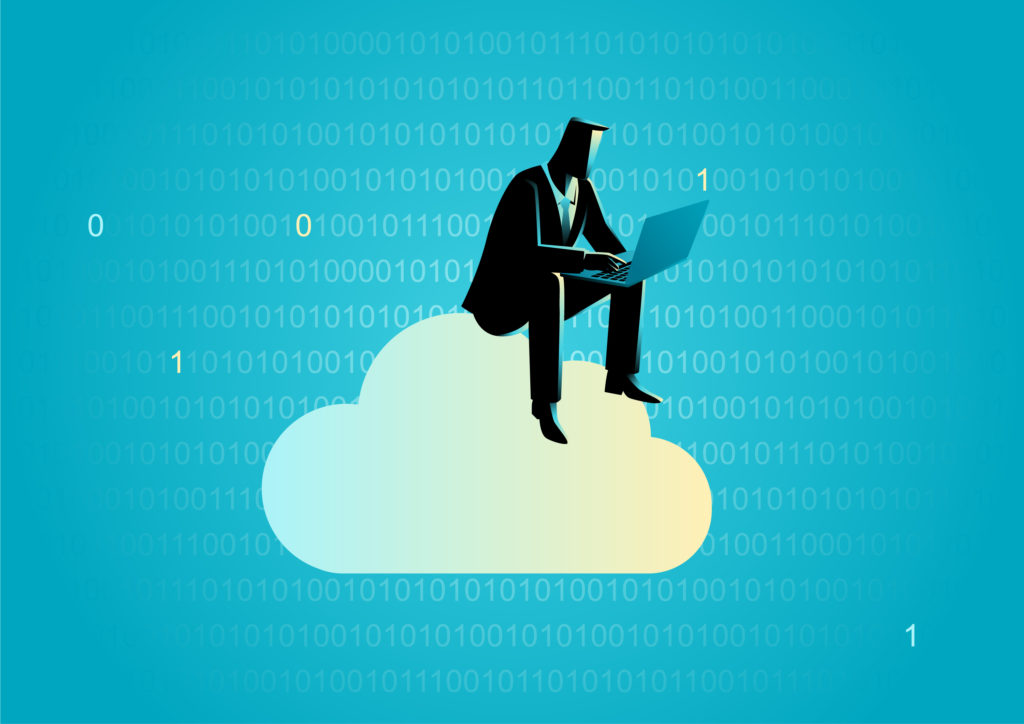
Throughout my lifetime there have been so many technological game changers. Each one has certainly had impact on our business world and then another is announced. Over the last few years it’s been blockchain, cloud and edge computing, 5G and Artificial Intelligence in the headlines. It’s hard to read any business or tech article that does not mention Artificial Intelligence (AI) at some point. I have had the great fortune of working with a number of technology driven companies whose leadership understood the value and the opportunity these new technologies could provide.
While purging some old files, I came across an article that I’d written back in around 2000 that really got me thinking about whether it had relevance today. At the time I wrote it, the world had just survived the Y2K transition. Offshore development and outsourcing was just beginning to take root driven by shortage of U.S. based tech personnel (especially COBOL programmers). This led many companies to move offshore for their code remediation needs. The primary location was India. At that time, the IT outsourcing world leaders were all U.S. based with a focus on data center (and desktop) outsourcing and management, systems development, off the shelf enterprise software package implementation and beginning to move heavily into all things internet. Those of us who had been in this industry for some time understood that technical resource labor arbitrage would soon change the game. At that time I was responsible for marketing and portfolio management globally for one of the largest systems integrators. Our high value consulting arm of the company, focused on management consulting and they developed a series of programs which identified critical issues most companies face and defined it as the CEO Agenda.
Our unit’s focus was much more solutions consulting and IT oriented. If you remember back in that timeframe, the “.com bubble” was still bubbling. Companies were faced with how to leverage their investments to keep up in a changing marketplace while continuing to evolve and improve internal processes and operations. We delivered lots of solutions aimed at helping companies stay ahead, get ahead, or chart new territory with IT investments.
The concept I envisioned was based on what I called Continuous Enterprise Optimization (CEO) or the CEO Operations Agenda. Reading through my notes and rekindling my thoughts relating to what’s going on today, I felt very strongly that even 20 years later the concept still holds.
Today I work with several small companies, some being startups, they all have one thing in common. It is the need to fully optimize the use of all of their resources, especially capital. The very survival of these small and young companies depends on it.
While businesses have been optimizing their operations for centuries. I believe the pace of change accelerated in the years 2000-2010, thanks to the rise of new technologies and the increasing globalization of the economy.
Here are several ways that businesses “optimized” in the years 2000-2010:
- Successful businesses embraced technology: Back then we helped companies install, migrate to, and upgrade new technologies, such as enterprise resource planning (ERP) systems, customer relationship management (CRM) systems, and e-commerce platforms to improve their efficiency and productivity and overall improve revenue. These systems helped businesses manage the ever increasing amount of data that was being collected.
- Companies started to outsource non-core functions: This was the golden age of outsourcing. Businesses began to focus more on their core competencies and outsource non-core functions, such as manufacturing, IT, and customer service, to specialized providers. This allowed them to reduce costs and focus on core strengths.
- Businesses continued to move toward improvement methodologies: The programs of W.E. Deming and Phillip Crosby, who were the gurus of the day, became the center of many company’s learning investments. Their books and classroom materials were a staple for me and most professionals in our industry. Businesses continued to adopt lean manufacturing principles (which began in the late 70’s and accelerated in the 80’s and 90’s) to cut waste and improve efficiency in their production processes. Six Sigma (improving processes by reducing defects and variability), Kaizen (the Japanese philosophy of continuous improvement) and Business Process Management (BPM) were standard approaches to improve the performance of business processes.
- Globalizing operations: Creation and adoption of improved telecommunications as well as the rise of the internet, allowed businesses to expand their operations into new markets to reach new customers and take advantage of labor arbitrage to reduce costs.
- The shift to self service driven by the internet: Self-service and the internet caused companies to become focused on customer experience and on improving that experience to build loyalty and drive sales.
Some of the more well known success stories of companies who I believe embraced the concepts of CEO in the 2000 – 2010 period were:
- Walmart: Walmart using EDI and just in time technology to improve its supply chain and inventory management, allowing prices to customers.
- Amazon: Amazon used e-commerce to disrupt the traditional retail industry and become the world’s largest online retailer.
- Dell: Dell used outsourcing to reduce its manufacturing costs and become the world’s leading computer manufacturer.
- Toyota: Toyota used lean manufacturing to become one of the most efficient automakers in the world.
- Starbucks: Starbucks focused on improving the customer experience by creating a welcoming atmosphere and offering a wide variety of coffee and food options.
These are just a few examples of how businesses optimized in the years 2000-2010. The pace of change continues to accelerate, and businesses today are still looking for new ways to improve their operations.
Now let’s shift focus to what has happened since 2010 and into today. Here are some ways that businesses are optimizing in the years 2010 – the present:
- Successful businesses wholeheartedly began to embrace digital transformation: Many businesses are undergoing a digital transformation which involves adopting digital technologies to improve various aspects of their operations. This included the implementation of cloud computing, artificial intelligence, and data analytics to improve their operations and customer service.
- The growth of remote work: The COVID-19 pandemic in 2020 accelerated the adoption of remote work, with many businesses optimizing their operations to support remote teams. This included the implementation of virtual collaboration tools, remote access technologies, and flexible work policies.
- Increasing focus on customer experience: Businesses have increased their focus on customer experience and morphed into customer anticipation. This involves using data and analytics to better understand customer needs and to personalize their experiences. They are increasingly turning to automation to improve efficiency and reduce costs. This has included the implementation of robotic process automation (RPA), chatbots, and automated customer service systems.
- Supply Chain Optimization: Many businesses focused on optimizing their supply chain operations, which included the adoption of just-in-time (JIT) inventory management, predictive analytics, and blockchain technologies. Walmart’s success was a clear signal that these changes worked well.
- Addressing the need for Cybersecurity Measures: With the increasing reliance on digital technologies, businesses also optimized their operations by implementing critical cybersecurity measures. This included the adoption of multi-factor authentication, encryption technologies, and threat detection and response systems.
- Applying Sustainability Practices: Many businesses optimized their operations by adopting sustainable practices, including the implementation of energy-efficient technologies, waste reduction strategies, and sustainable sourcing practices.
Some specific examples of continuous optimization in the years 2010 – 2023:
- Netflix: Netflix morphed from a video rental by mail company to a streaming powerhouse. Leveraging data analytics and machine learning to provide personalized content, recommendations and personalize the viewing experience for each customer. This has helped Netflix to become one of the most popular streaming services in the world. Netflix just stopped it’s mail order DVD business last month.
- Amazon: Amazon has been a leader in optimizing its business through technology. Amazon has used cloud computing to scale its business and to offer a wide range of products and services to customers. The company has implemented robotics in its fulfillment centers to improve efficiency and reduce costs. Amazon’s use of artificial intelligence and machine learning algorithms has also optimized its inventory management, pricing strategies, and customer recommendations. They have been able to leverage the incredible infrastructure they built for themselves into the undisputed Number 1 provider of cloud services to commercial clients with over 80% of the market.
- Tesla: Tesla has optimized its supply chain by using a vertically integrated model, which involves controlling all aspects of the production process, from raw material sourcing to manufacturing to distribution. This has allowed Tesla to reduce costs and improve the quality of its products. Tesla has used artificial intelligence to develop self-driving cars. Tesla has also used big data analytics to improve its manufacturing processes and to reduce costs.
- Google: Google has used cloud computing to power its search engine and other products and services. Google has also used artificial intelligence to develop new products, such as Google Assistant, Google Translate and BARD (their AI chat platform)
These are just a few examples of how businesses have been optimizing in the last few years. Companies who have embraced digital transformation, took advantage of new technologies and focused on customer experience have been most successful in recent years. I read recently that over 50% of the Fortune 500 companies in 2000 have either gone bankrupt, been acquired of ceased to exist by 2023. Failure to adapt to changing technologies and optimization of their businesses I believe is a significant contributing factor.
Continuous Enterprise Optimization (CEO) refers to the ongoing process of improving and refining a business’s operations, processes, and strategies in order to maximize efficiency, productivity, and profitability. This involves regularly analyzing performance data, identifying areas for improvement, and implementing changes that can enhance the overall effectiveness of the organization.
CEO is based on the fact that there is always room for improvement, and that even small improvements can have a significant impact over time. It is also based on the principle that improvement should be a continuous process, not just a one-time event.
The goal of continuous enterprise optimization is to ensure that a business is always operating at its highest potential and adapting to changes in the market or industry. This may involve the use of various tools and methodologies, such as lean management, process improvement, and data analysis to identify and eliminate waste, streamline workflows, and optimize resource allocation.
CEO can be applied to all aspects of an enterprise, including operations, customer service, product development, and marketing. It can be used to improve efficiency, reduce costs, increase quality, and improve customer satisfaction.
Overall, continuous enterprise optimization is a proactive approach to business management that requires the creation of a culture of continuous improvement and drive long-term success.
So here are my recommendations for any business to adopt a continuous enterprise optimization strategy.
- Embrace change and establish a Culture of Continuous Improvement: The business world is constantly changing. Businesses need to be able to adapt to change in order to stay ahead of the competition. This means being open to new ideas and new ways of doing things. Regularly review and optimize your business processes to eliminate inefficiencies, reduce costs, and improve productivity. This might involve automating repetitive tasks, reorganizing workflows, or implementing new technologies.
- Foster a company culture which encourages innovation, learning, and a willingness to adapt and change: Encourage employees to seek out opportunities for improvement and provide them with the tools and resources they need to succeed. Employees are a company’s most valuable asset. Businesses need to empower their employees to make decisions and to be creative. This means creating a culture of innovation and collaboration. Provide opportunities for your employees to develop new skills and knowledge. An informed and skilled workforce can contribute significantly to your optimization efforts.
- Businesses must continue to Invest in Innovation: Innovation is essential for businesses that want to stay ahead of the curve. Businesses need to invest in research and development for their products and services. They must stay up-to-date with the latest technologies and tools which can help improve operations, enhance products or services, and better meet customers’ needs. Artificial Intelligence (AI) is a great example. It is evolving fast. I highly recommend 2 books that helped me put it all in context. AI 2041 by Kai-Fu Lee and Chen Qiufan which uses short stories to describe a possible 2041 future with AI. And The Coming Wave by Mustafa Suleyma with Michael Bhaskar which presents what AI does today and can do tomorrow. It also highlights the potential dangers.
- Have a relentless focus on Customer Experience: Customer experience is more important than ever before. Businesses need to focus on creating a positive customer experience at every touchpoint. This means providing excellent customer service, offering convenient and easy-to-use products and services, and resolving customer issues quickly and efficiently. Listen to your customers’ feedback and use it to improve your products, services, and customer service. Understanding your customers’ needs and expectations can help you stay competitive and relevant in the market.
- Learn to master the use of Data and Analytics: Data and analytics can be used to improve every aspect of a business. Businesses can use data to understand their customers better, to improve their operations, and to make better decisions. Collect and analyze data from various aspects of your business, including sales, operations, customer service, and more. Use this data to identify trends, patterns, and areas for improvement.
- Set Clear Goals and Objectives: Define specific, measurable, achievable, relevant, and time-bound goals that align with your business’s overall vision and mission. These goals will guide your optimization efforts and help measure your success. Establish and monitor KPIs that are aligned with your business objectives. These will help track progress and make data-driven decisions.
- Building Strong Relationships with Partners and Suppliers: Optimize your supply chain and logistics by developing strong relationships with your partners and suppliers. This can help you reduce costs, improve quality, and ensure timely delivery of goods and services.
Continuous optimization is an ongoing effort that requires dedication, collaboration, and a willingness to change and adapt. By following these steps, businesses can improve performance and stay competitive in the future.


 I was talking to a friend of mine, Steve Montague, the other day about the changes we’ve witnessed in the role of IT organizations and environments in our careers. While there certainly have been unbelievable changes with security, compliance, network and hardware capacity and capability over the last 20 to 30 years, our discussion centered on the role of the CIO and the shift of IT from the back office of the company clearly to the front office. It’s hard to imagine today that a little over 30 years ago the CIO position, if it existed at all, was in a relatively small number of companies. Back then IT for most companies primarily provided record-keeping such as the creation of financials, human resource records, the order to cash process, and inventory management. IT is now synonymous with the very fabric and in every organization, the core identity of the company. IT’s pace of innovation is growing exponentially, and I believe successful companies will evolve all aspects of their business to enable better customer experience and operational efficiency in a secured and seamless way.
I was talking to a friend of mine, Steve Montague, the other day about the changes we’ve witnessed in the role of IT organizations and environments in our careers. While there certainly have been unbelievable changes with security, compliance, network and hardware capacity and capability over the last 20 to 30 years, our discussion centered on the role of the CIO and the shift of IT from the back office of the company clearly to the front office. It’s hard to imagine today that a little over 30 years ago the CIO position, if it existed at all, was in a relatively small number of companies. Back then IT for most companies primarily provided record-keeping such as the creation of financials, human resource records, the order to cash process, and inventory management. IT is now synonymous with the very fabric and in every organization, the core identity of the company. IT’s pace of innovation is growing exponentially, and I believe successful companies will evolve all aspects of their business to enable better customer experience and operational efficiency in a secured and seamless way.


